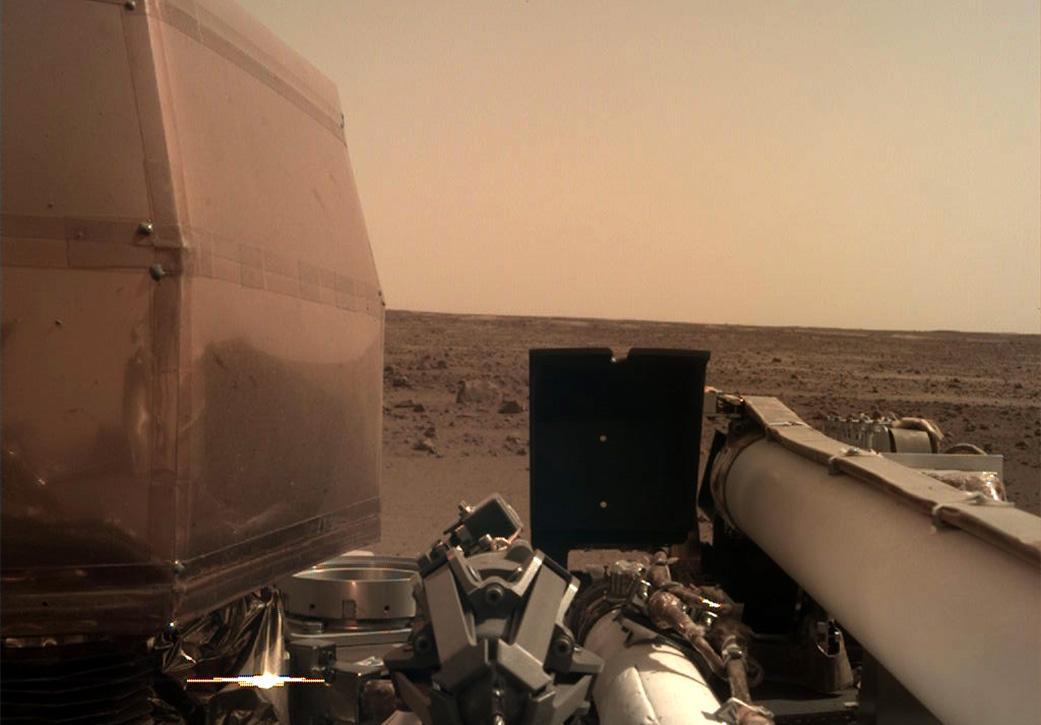Nasa InSight Mars lander sends back 'beautiful' selfie from red planet's surface
Photo marks the end of a descent that began with 'seven minutes of terror'
Your support helps us to tell the story
From reproductive rights to climate change to Big Tech, The Independent is on the ground when the story is developing. Whether it's investigating the financials of Elon Musk's pro-Trump PAC or producing our latest documentary, 'The A Word', which shines a light on the American women fighting for reproductive rights, we know how important it is to parse out the facts from the messaging.
At such a critical moment in US history, we need reporters on the ground. Your donation allows us to keep sending journalists to speak to both sides of the story.
The Independent is trusted by Americans across the entire political spectrum. And unlike many other quality news outlets, we choose not to lock Americans out of our reporting and analysis with paywalls. We believe quality journalism should be available to everyone, paid for by those who can afford it.
Your support makes all the difference.Nasa's brand new Mars lander has sent back the first stunning of the surface of the red planet, taken at the end of a terrifying journey.
As well as showing the dusty red ground that is now the InSight lander's home, the photo marks a successful close to a journey that took seven months from Earth, and culminated with a nervy few hours as InSight blasted through the Martian atmosphere.

The photograph, which shows the InSight spacecraft in the front and the Martian surface further on, is an incredible look at a world that has killed most of the landers that have tried to journey there.
It also shows that all of the spacecraft's systems are working. The photo was taken after the solar panels successfully folded out from its sides so that its batteries can be charged, and was relayed through the Mars Odyssey orbiter that floats around the planet and sends messages back down to Earth.
Tom Hoffman, InSight's project manager at Nasa's Jet Propulsion Laboratory, said: "The InSight team can rest a little easier tonight now that we know the spacecraft solar arrays are deployed and recharging the batteries.
"It's been a long day for the team.
"But tomorrow begins an exciting new chapter for InSight: surface operations and the beginning of the instrument deployment phase."
Using InSight's robotic arm, which has a camera attached, the mission team will be able to take more photographs in the coming days, Nasa has said.
This will help engineers to assess where to install the spacecraft's scientific instruments, which will be able to start sending back data to Earth within two to three months.
The InSight lander touched down on Mars just before 8pm GMT on Monday, surviving the so-called "seven minutes of terror", a tricky landing phase for the robotic probe, travelling at 13,200mph through the planet's thin atmosphere which provides little friction to slow down.
American space agency Nasa's 814 million dollar (£633 million) two-year mission aims to shine new light on how the Red Planet was formed and its deep structure, by mapping its core, crust and mantle.
InSight arrived on Mars's Elysium Planitia area north of its equator, described as an ideal spot for its flat, rockless surface.
It is the first attempt to reach Mars in six years.
Only 40% of missions to the planet have succeeded and all have been US-led.
Three UK-made seismometer instruments are on board InSight, part of a £4 million UK Space Agency effort to measure seismic waves.
Scientists from Imperial College London and the University of Oxford who created the instruments will be based at Nasa's Jet Propulsion Laboratory in California to assist with the study, including selecting the best spot for the robot arm to place the seismometer.
"It is wonderful news that the InSight spacecraft has landed safely on Mars," said Sue Horne, head of space exploration at the UK Space Agency.
"The UK scientists and engineers involved in this mission have committed several years of their lives to building the seismometer on board, and the descent is always a worrying time.
"We can now look forward to the deployment of the instrument and the data that will start to arrive in the new year, to improve our understanding of how the planet formed."
A second instrument will burrow five metres into the ground of Mars, measuring the planet's temperature, while a third experiment will determine how Mars wobbles on its axis.
Additional reporting by Press Association

Join our commenting forum
Join thought-provoking conversations, follow other Independent readers and see their replies
Comments